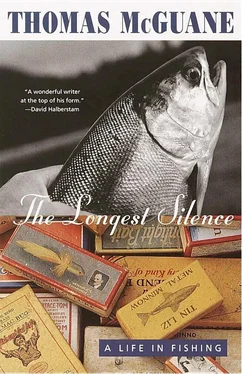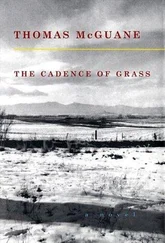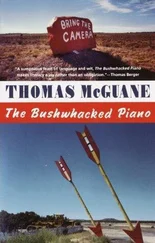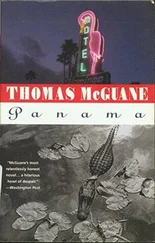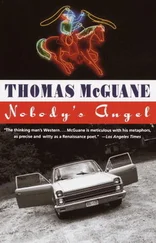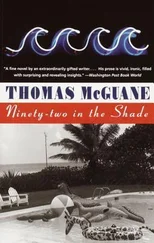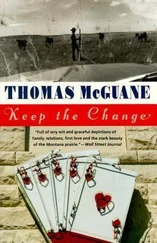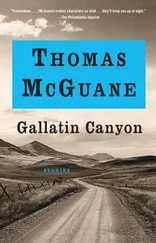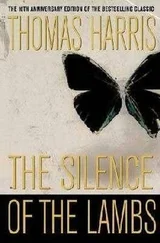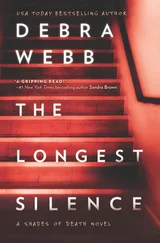“He not only fished hard,” Craig said, “he took everything in, everything. It was just so wonderful being with this guy. You’d get to a run and he was in touch with everything in it. If fish quit feeding, he could wait. He could wait ’til they started again. He was always watching.
“On the last day at the corral pool, he took a nap. There were some big fish on the bank. We crawled up and marked those fish and crossed the river so he could cast to them. He hooked a great big fish and landed it. I guess it was maybe the biggest fish he ever caught in his life. It was only four o’clock. But he said, ‘Let’s call it a day.’ That was so unlike him.” Craig paused. “He flew out the next morning.”
Craig brought out a beautiful collection of necks, enough hackles to last out the millennium. A tributary of the Big Hole River roared just beyond the window. “Maybe we fished too hard,” Craig said. “He admitted that himself. Because when he went home … he didn’t feel well. And, well, he died.” Craig looked at the fly-tying materials. “He sent me this stuff, to remember our trip by, I guess.” Craig was struggling with something. He said, “He was a doctor of tropical medicine.”
EVERY FLY FISHERMAN has an unreasonable view of fly rods, and I am no different. Generally, we’re united in the belief that all rod design has been progressive and that the thinking about fly rods in the past was so bad as to make it amazing that people were able to fish at all. This is based in good American fashion on the belief that angling is perfectable and chiefly concerned with efficiency. “I stepped into the water,” a fly fisherman was recently heard to say, “and proceeded to empty the pool.” We, his listeners, were bowled over. The trout stream as modern toilet. Now I understand that this sort of hyperbole is part of the fun, but its humor is based on a crackpot idea.
I don’t think bamboo rods, for example, are as efficient as glass and graphite. But I like the smell of varnish when I open the rod tube! I like the human hands that made them. I had a graphite tarpon rod whose hook keeper wouldn’t take anything larger than a number 10 dry-fly hook, an understandable mistake when you realize it wasn’t made by a fisherman but someone who looked with equal interest upon golf shafts, tennis rackets, riding crops, skis, and umbrella handles. Yet I dearly love graphite for helping me put some poetry in my loop and for relieving the tennis elbow I acquired from steer roping.
Anglers have begun to crave conformity. This has not always been the case. Now some of us long for leadership, someone to tell us whether we should have a fast action rod or one that loads with less line. Fast was the mantra until recently, but slower, softer rods have claimed the moral high ground.
Evaluation is subjective. The dream is of the perfect rod and there is no such thing. A fly rod has to meet too many criteria, of which many are contradictory. Think of a rod for western rivers that require delicate presentations in high winds. Is the rod matched to the fish, the fly being cast or the atmospheric conditions? The rod suited to casting large streamers in the fall is as big as some people use for tarpon. But the fish haven’t gotten any bigger since August. A five-weight easily handles the sparsely dressed flies we use on bright sand bottoms for tarpon, but it would never land the fish. Though the perfect distance for a trout rod to load is probably around twenty-five feet, who wants to try out a rod down at the fly shop with twenty-five feet of line? And while no rod casts nicely with split shot, some tolerate it better than others. In a perfect world, fishing with split shot on the leader wouldn’t be fly-fishing at all. Neither would monofilament nymphing, and maybe even shooting heads. Lee Wulff said that the fish is entitled to the sanctuary of deep water. That’s where most of us used to set the bar in trout fishing. We fished on top and tried to devise ways of catching big fish that way, fishing at night, fishing with greater stealth, hunting remote places that rarely saw an angler.
So many rods are now designed for micro-niches, with extreme line sizes and weird lengths. It is a great pleasure to use some of these rods when the conditions for which they were designed are perfect. Unless we begin using caddies, it would be useful to remember that conditions are rarely perfect in angling. Long ago, when I started fly-fishing, the standard trout rod was an HCH, a six weight, eight to eight-and-a-half feet long. After four decades of evolution in material and ideas, I have concluded this is still the case, especially when you consider what it takes to make an all-day rod in most places. The rod might have grown to nine feet. A full day in one of my local rivers might require the angler to go through five sizes of dry-flies and three of wet. The wind will range from zero to forty. A five-weight rod is not enough and a seven is too much.
In my view, fly rods have some mysterious ergonometric range of length that is hard to explain. The same is true of hammer handles, oars, tennis rackets, and golf clubs: the variations in length are surprisingly small. A trout rod significantly under eight feet is too short, and significantly over nine, too long. If it’s too short, it leaves too much line on the water for good drag control and speeds up the casting cycle. Too long and the rod becomes a handful in the wind and helps produce tailing loops. I had a ten-foot summer steelhead rod that I loved until the wind came up, then I wanted to swap it with someone unwitting enough to obsess about line control, just as I had. A rod better have a great reason for being over nine feet or under eight. Nine is a wonderful length for trout, tarpon, or billfish. It’s a length the human body likes. Just today I got out an old favorite, a seven-and-a-half foot trout rod, and fished half a day with it. I hadn’t used anything shorter than eight-and-a-half for so long that I was unpleasantly surprised to discover the extra drag problems posed by the lower angle between rod, line, and water, not to mention the hurried casting cycle. The speeding technology of fly rods has finally just emphasized some basic truths. Even in the days when bamboo was king, light and fast were the ideals, sometimes called “dry-fly action.” Describing a rod as having a “wet-fly action” was tantamount to admitting that it was a clunker.
I know that I’m not going to stop anyone out there from acquiring a bunch of overly specific niche rods. I’m probably not even going to stop myself. I sure haven’t so far. The dream of fly-fishing is one of simplicity, and most of us pursue it in the same way: acquire a blizzard of flies and gear in the belief that you are casting a wide net and that, at some point, you will get rid of all but the few perfect items and angle in the dreamed-of simplicity. For most, this pile grows until death brings it to a stop. If fly-fishing weren’t still more or less esoteric, yard sales would never recover from this epidemic.
The biggest problem with fly rods is that they must not only meet all the physical criteria for the fishing you do but also inspire “love.” For example, I have a six-weight rod that is far and away the best trout rod I have ever owned. It is fast, light, and has the quickest damping stroke imaginable. It was designed by probably the greatest fly caster of all time. It is also cheesily built, with porous cork in the handles, disco guide wraps, and decal graphics that include bar codes to distinguish this rod from other recreational products from the same company. I’m going to have to work at loving this, the best trout rod I’ve ever had. I’m going to have to almost wear it out. Its ultramodern decor will have to sink into history and become sort of campy. I may have to break it, or use it to defend myself during a holdup or to stand off a bear. Right now it’s a yuppie artifact with as much soul as a paper clip. It casts a thousand times better than the beautiful old Garrison I have which takes the same line.
Читать дальше
